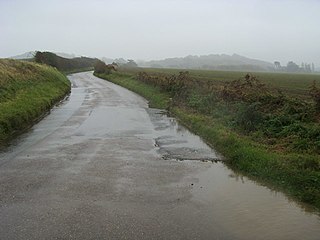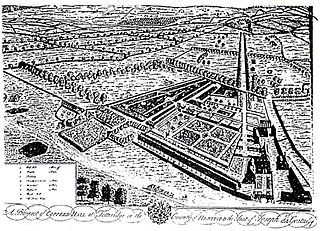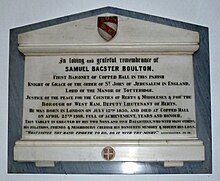
Ivinghoe is a town and civil parish in east Buckinghamshire, England, close to the borders with Hertfordshire and Bedfordshire. It is 33 miles northwest of London, 4 mi (6 km) north of Tring and 6 mi (10 km) south of Leighton Buzzard, close to the village of Pitstone.

The title Lord Forrester was created in the Peerage of Scotland in 1633 for Sir George Forrester, Bt who had already been created a baronet in the Baronetage of Nova Scotia in 1625. When his only son died, Forrester was given a regrant of the peerage in 1651 with special remainders:
The court leet was a historical court baron of England and Wales and Ireland that exercised the "view of frankpledge" and its attendant police jurisdiction, which was normally restricted to the hundred courts.

John Lee LL.D, FRS, born John Fiott, was an English philanthropist, astronomer, mathematician, antiquarian, barrister, and numismatist.

William Lee Antonie was an English politician.

Bruce Castle is a Grade I listed 16th-century manor house in Lordship Lane, Tottenham, London. It is named after the House of Bruce who formerly owned the land on which it is built. Believed to stand on the site of an earlier building, about which little is known, the current house is one of the oldest surviving English brick houses. It was remodelled in the 17th, 18th and 19th centuries.

Dinas Mawddwy is a town in the community of Mawddwy in south-east Gwynedd, north Wales. It lies within the Snowdonia National Park, but just to the east of the main A470, and consequently many visitors pass the town by. Its population is roughly 600. The town marks the junction of the unclassified road to Llanuwchllyn which climbs up through the mountains to cross Bwlch y Groes at its highest point, the second highest road pass in Wales. This minor road also provides the closest access to the mountain Aran Fawddwy and is the nearest settlement to Craig Cywarch.

The manorial courts were the lowest courts of law in England during the feudal period. They had a civil jurisdiction limited both in subject matter and geography. They dealt with matters over which the lord of the manor had jurisdiction, primarily torts, local contracts and land tenure, and their powers only extended to those who lived within the lands of the manor: the demesne and such lands as the lord had enfeoffed to others, and to those who held land therein. Historians have divided manorial courts into those that were primarily seignorial – based on feudal responsibilities – and those based on separate delegation of authority from the monarch. There were three types of manorial court: the court of the honour; the court baron; and the court customary, also known as the halmote court.

Freckenham is a small rural village and civil parish in the West Suffolk district of Suffolk in East Anglia, in the country of England.

Bayworth is a hamlet in the civil parish of Sunningwell about 3 miles (5 km) south of Oxford. Bayworth was part of Berkshire until the 1974 boundary changes transferred it to Oxfordshire.

Old Burghclere is part of Burghclere in Hampshire, England, located south of the large town of Newbury near the A34 road. The village of Burghclere, but less so Old Burghclere, was once on the A34 and has now been by-passed, although this section is not really part of the Newbury bypass.
Sir Nicholas Hare of Bruisyard, Suffolk was Speaker of the House of Commons of England between 1539 and 1540.
Blackheath Hundred or the Hundred of Blackheath was a hundred in the county of Surrey, England. It corresponds to parts of the districts of Waverley and Guildford.

Apse Manor is a manor house on the Isle of Wight, situated just within the eastern boundary of the Newchurch parish. The house is pleasantly situated just to the north of the high road from Shanklin and as of 1912 retained a room with a stone fireplace and a heavy panelled Tudor ceiling.

The Honourable Hugh Hare (1668–1707) was an English translator and politician.
Hugh Hare, 1st Baron Coleraine, was an English courtier.
Thomas Gawdy, of Shotesham and Redenhall, Norfolk, was Serjeant-at-law, an English barrister, Recorder, and member of parliament.
John Cage was a citizen of London and the holder of the Manor of Totteridge in Hertfordshire which was granted to him by Queen Elizabeth I in 1590 but lost to the Peacock family following a legal case.

The Manor of Copped Hall was located to the south of St Andrew's church in Totteridge, Hertfordshire, in an area that is now part of the London Borough of Barnet.

Ture is a townland in the civil parish of Drumlane, Barony of Loughtee Lower, County Cavan, Ireland.















